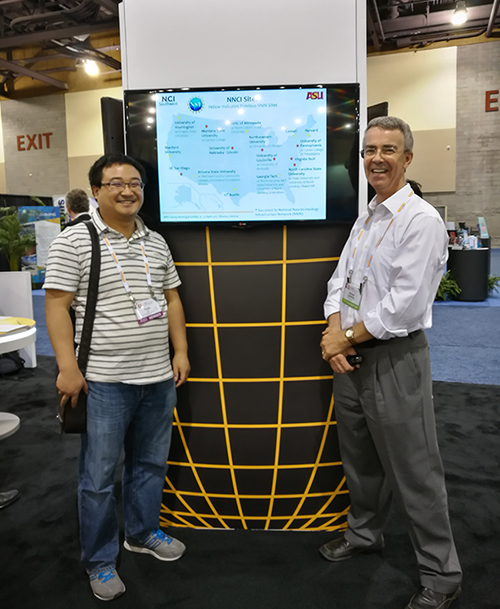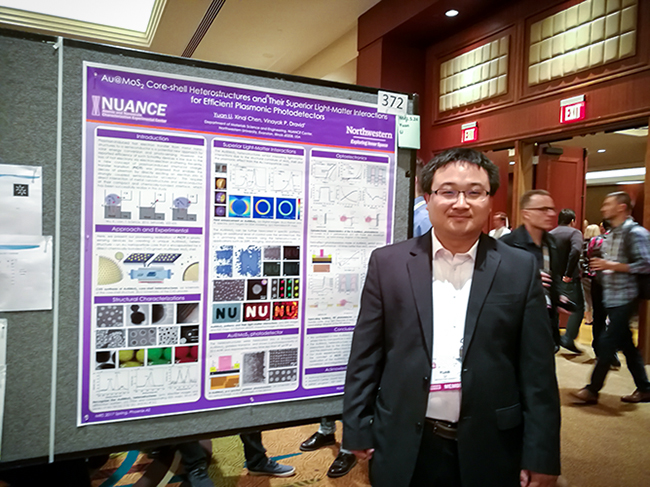Dr. Yuan Li attends Materials Research Society (MRS) Spring Meeting
Dr. Yuan Li, postdoctoral fellow at NUANCE's KECK-II facility, attended the 2017 Materials Research Society (MRS) spring meeting in Phoenix, AZ, from April 16 to 22. Here, he presented research on Au@MoS2 photodetection (abstract below).
(MRS) spring meeting in Phoenix, AZ, from April 16 to 22. Here, he presented research on Au@MoS2 photodetection (abstract below).
Dr. Li also visited the ASU NNCI booth, where he met with Professor Trevor Thornton, Director of NCI-SW, the southwest regional node of the National Nanotechnology Coordinated Infrastructure (pictured to the right).
Abstract
Developing Au@MoS2 Core-shell Heterostructures with Strong Light-Matter Interactions
Yuan Li, Xinqi Chen, Vinayak P Dravid
There are emerging opportunities to harness diverse and complex geometric architectures based on nominal two-dimensional atomically layered structures. The chemical vapor deposition of two-dimensional layered transition metal dichalcogenides (TMDs) has been realized on various flat substrates including oxidized silicon wafer, h-BN, sapphire, graphene and Au foil. However, the direct growth of fullerene-like MoS2 on spherical nanoparticles of noble metals has not yet been achieved. Herein we report synthesis and properties of a new core-shell heterostructure, termed Au@MoS2, where the Au nanoparticle is snugly and contiguously encapsulated by few shells of MoS2 atomic layers. The heterostructures were synthesized by direct growth of multilayer fullerene-like MoS2 shell on Au nanoparticle cores. The Au@MoS2 heterostructures exhibit interesting light-matter interactions due to the structural curvature of MoS2 shell and the plasmonic effect from the underlying Au nanoparticle core. We observed significantly enhanced Raman scattering and photoluminescence emission on these heterostructures. We attribute these enhancements to the surface plasmon-induced electric field, which simulations show to mainly localize within the MoS2 shell. We also found potential evidence for the charge transfer-induced doping effect on the MoS2 shell. The DFT calculations further reveal that the structural curvature of MoS2 shell results in a modification of its electronic structure, which may facilitate the charge transfer from MoS2 to Au. Such Au@MoS2 core-shell heterostructures have potential for future optoelectronic devices, optical imaging, and other energy-environmental applications.

